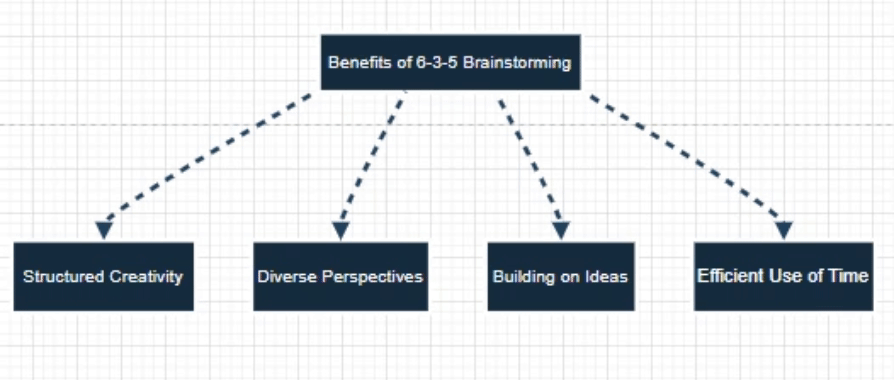In today’s fast-paced world, the need for innovative solutions and fresh ideas is greater than ever. Whether you’re collaborating in a team or working on a solo project, the ability to generate creative ideas is a key differentiator. Introducing the 6-3-5 brainstorming technique—a structured approach designed to encourage diverse thinking and uncover unique ideas. Ideal for groups aiming to harness collective creativity, this method is an essential addition to any brainstorming toolkit.
What is the 6-3-5 Brainstorming Technique?
The 6-3-5 brainstorming technique is a structured method for generating ideas, designed to efficiently leverage group creativity. The numbers represent six participants, each contributing three ideas, over five rounds of sharing. This technique fosters a collaborative environment where participants can build upon each other’s ideas, resulting in a diverse array of creative solutions.
How It Works

Form a Group of Six: The optimal group size for 6-3-5 brainstorming is six participants. This size allows for a manageable yet diverse flow of ideas.
Set a Problem Statement: Clearly define the problem or challenge to be addressed. A well-defined problem statement guides the focus of the brainstorming session.
Idea Generation: In the first round, each participant writes down three ideas related to the problem on a sheet of paper. This phase is conducted silently to encourage independent thinking.
Pass the Paper: Participants then pass their paper to the next person. In the second round, each person reviews the ideas received and adds three new ideas, either expanding on the existing ones or introducing fresh concepts.
Repeat the Process: This cycle continues for five rounds. By the end of the session, each sheet will have 18 ideas, culminating in a total of 108 ideas from the group.
Review and Discuss: After the final round, the group reviews all the collected ideas together. This discussion phase helps refine and combine ideas into viable solutions.
Benefits of 6-3-5 Brainstorming

Structured Creativity: This method offers a structured framework for brainstorming, ensuring a continuous and organized flow of ideas while maintaining flexibility.
Diverse Perspectives: By gathering individual input before group discussion, the technique captures a wide range of perspectives, enhancing the creativity and richness of the ideas generated.
Building on Ideas: Participants are encouraged to expand on each other’s suggestions, which often leads to more refined and innovative solutions.
Efficient Use of Time: The fixed rounds and time constraints ensure that the session remains productive and focused, preventing it from dragging on.
Tips for Effective 6-3-5 Brainstorming
Prepare Participants: Ensure that participants are familiar with the technique and the problem statement in advance, so they are ready to contribute effectively.
Encourage Openness: Create a positive environment where all ideas are welcome, encouraging participants to share freely without fear of criticism.
Focus on Quantity, Not Quality: Initially, aim to generate as many ideas as possible. The focus should be on quantity, as quality and feasibility will be evaluated during the review phase.
Use Visuals: Encourage the use of diagrams or sketches, as visuals can often stimulate additional ideas and provide clarity.
Conclusion
The 6-3-5 brainstorming technique is an excellent tool for unlocking group creativity and generating a diverse array of ideas. Its structured yet collaborative approach maximizes idea generation and fosters innovation by leveraging the collective strengths and perspectives of a team. Whether tackling a complex challenge or brainstorming new concepts, incorporating 6-3-5 brainstorming into your process can lead to actionable and innovative solutions. Try it in your next session and discover the power of collective creativity!